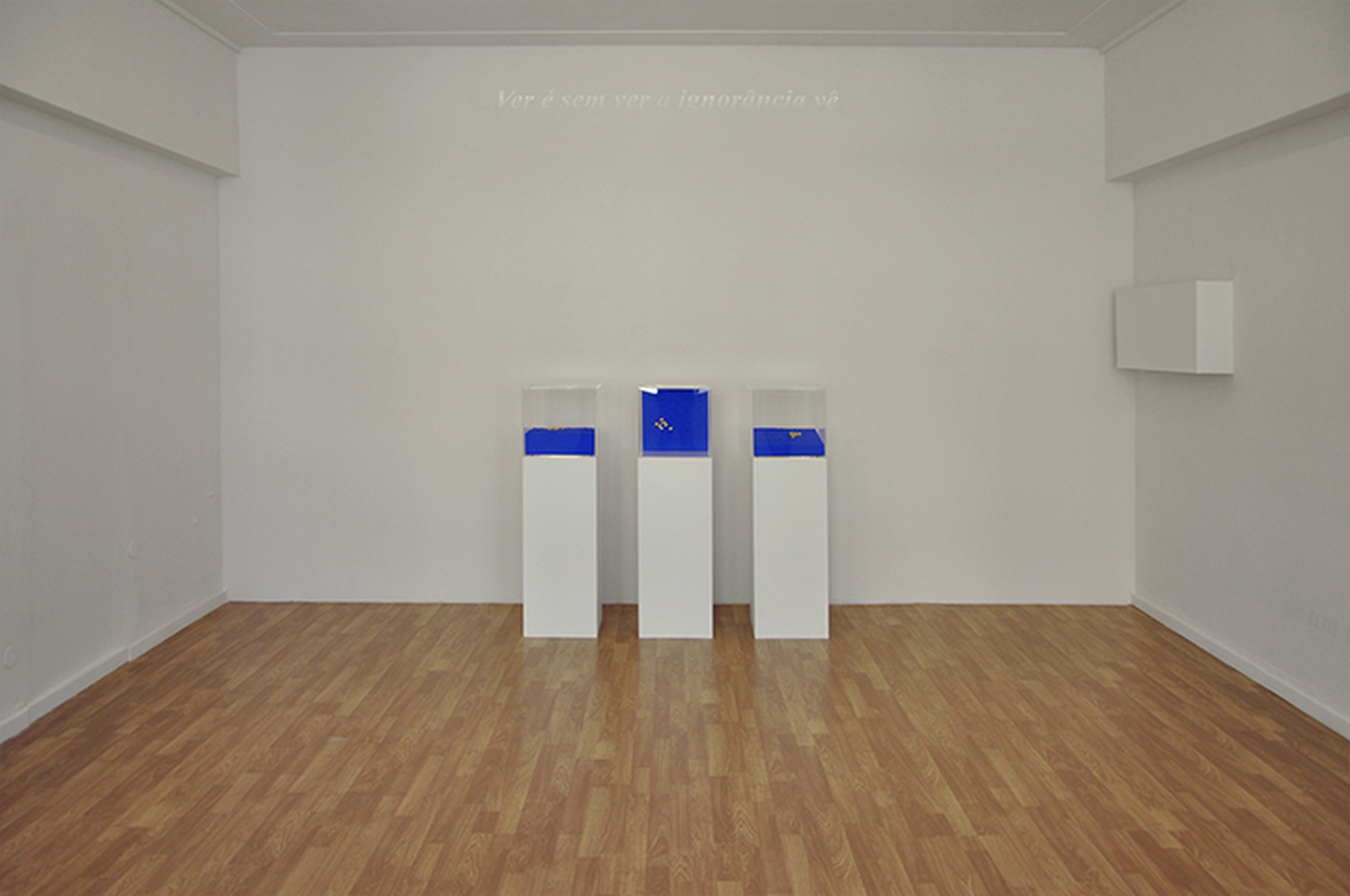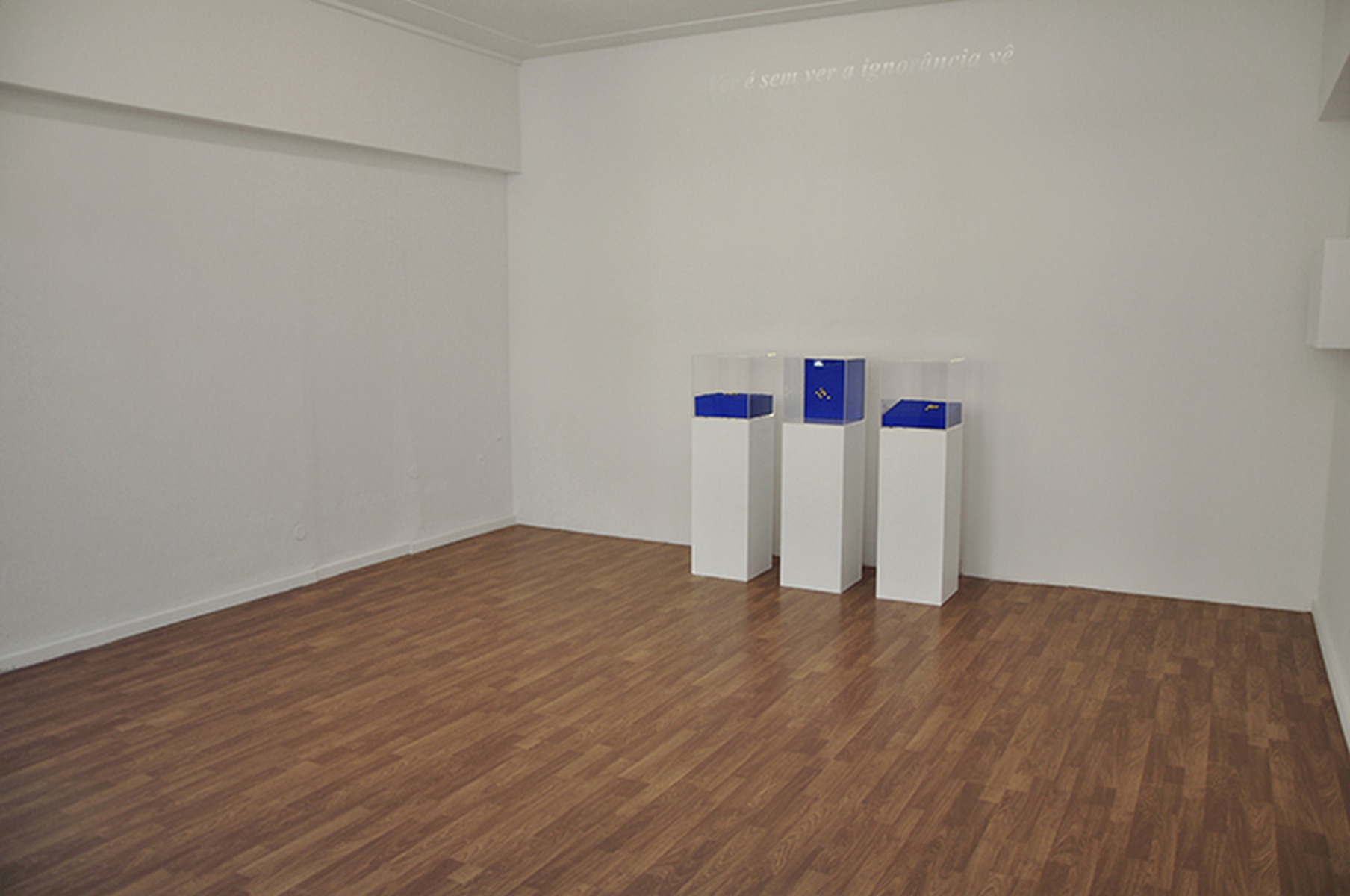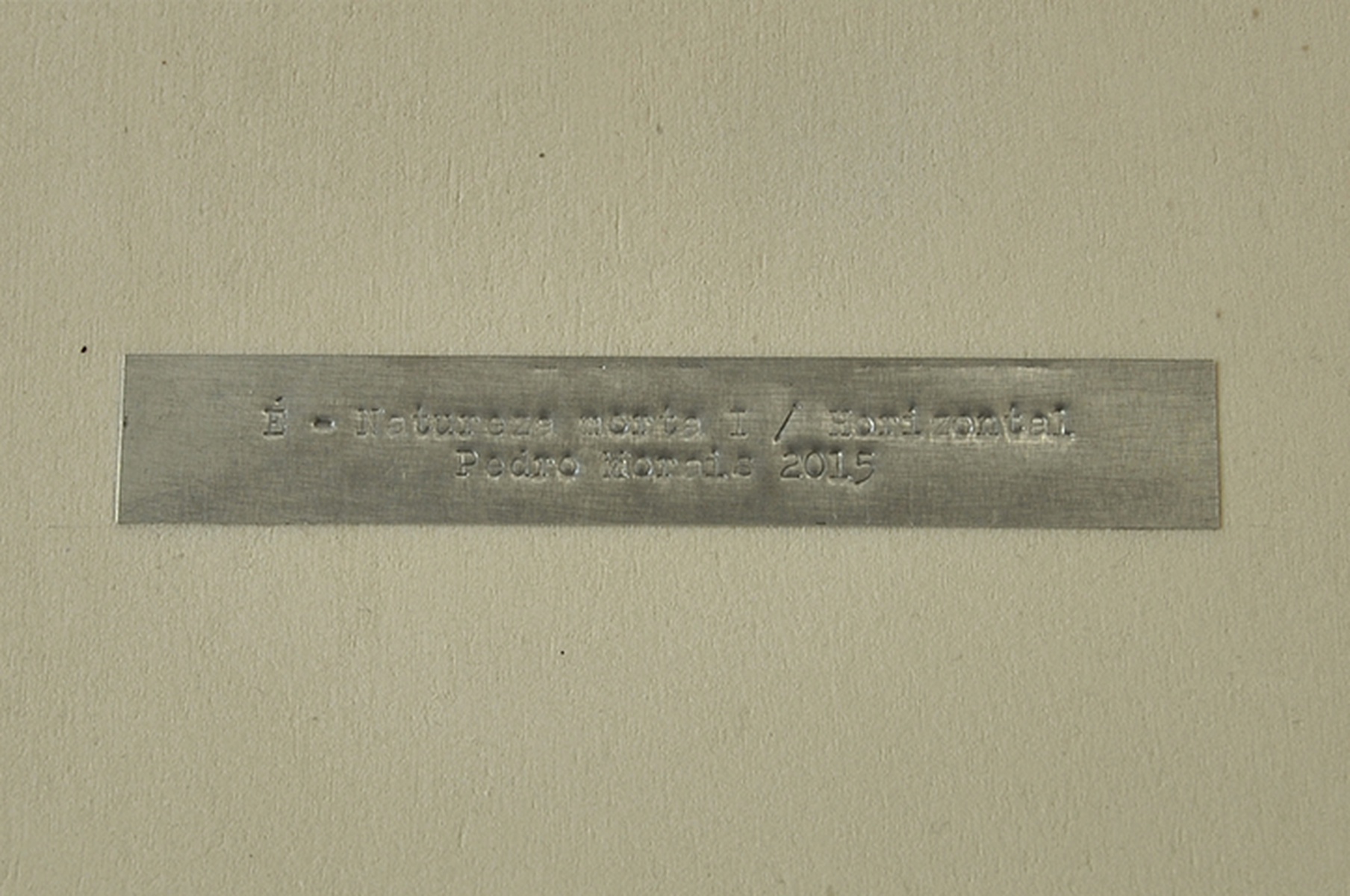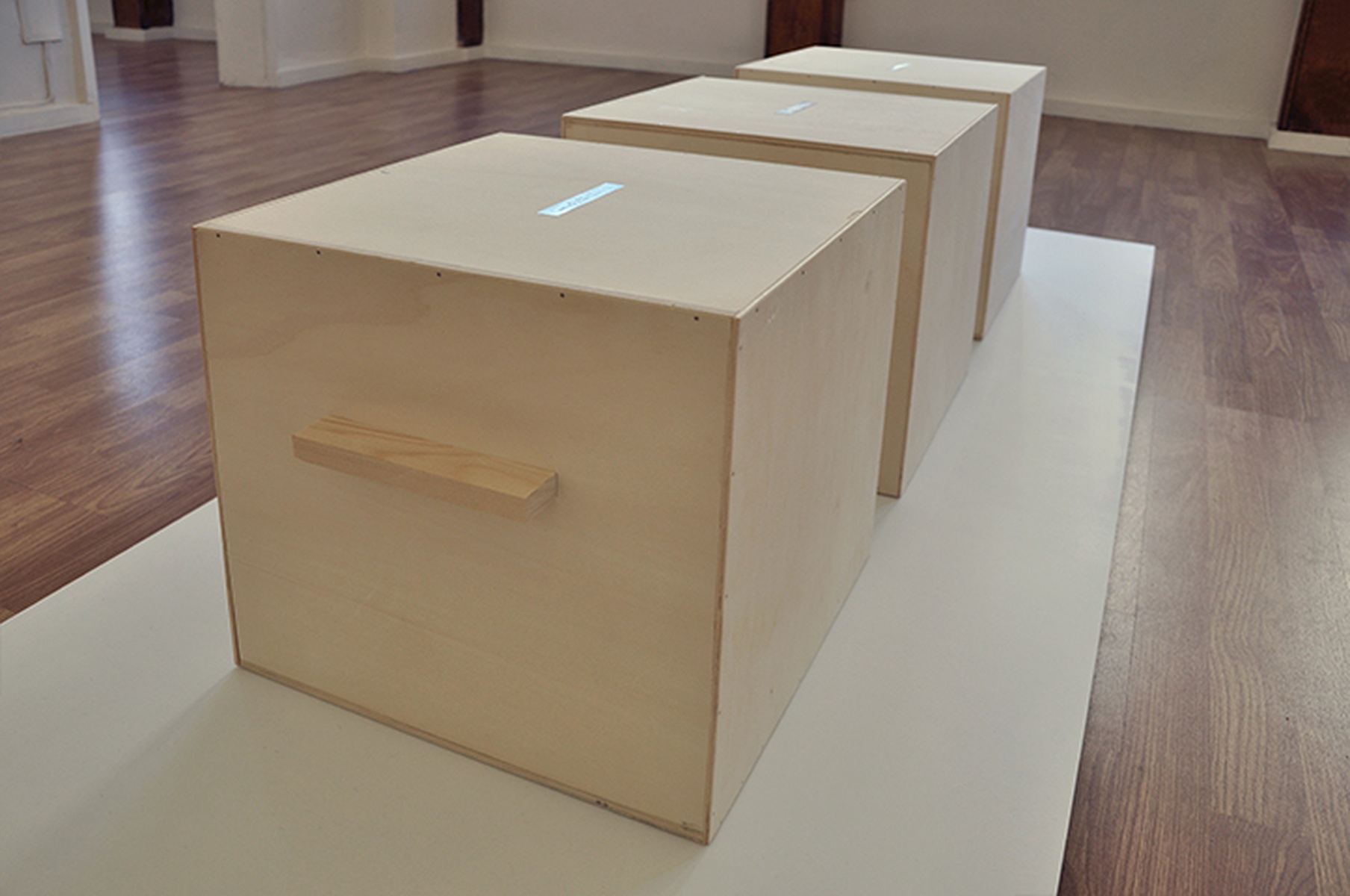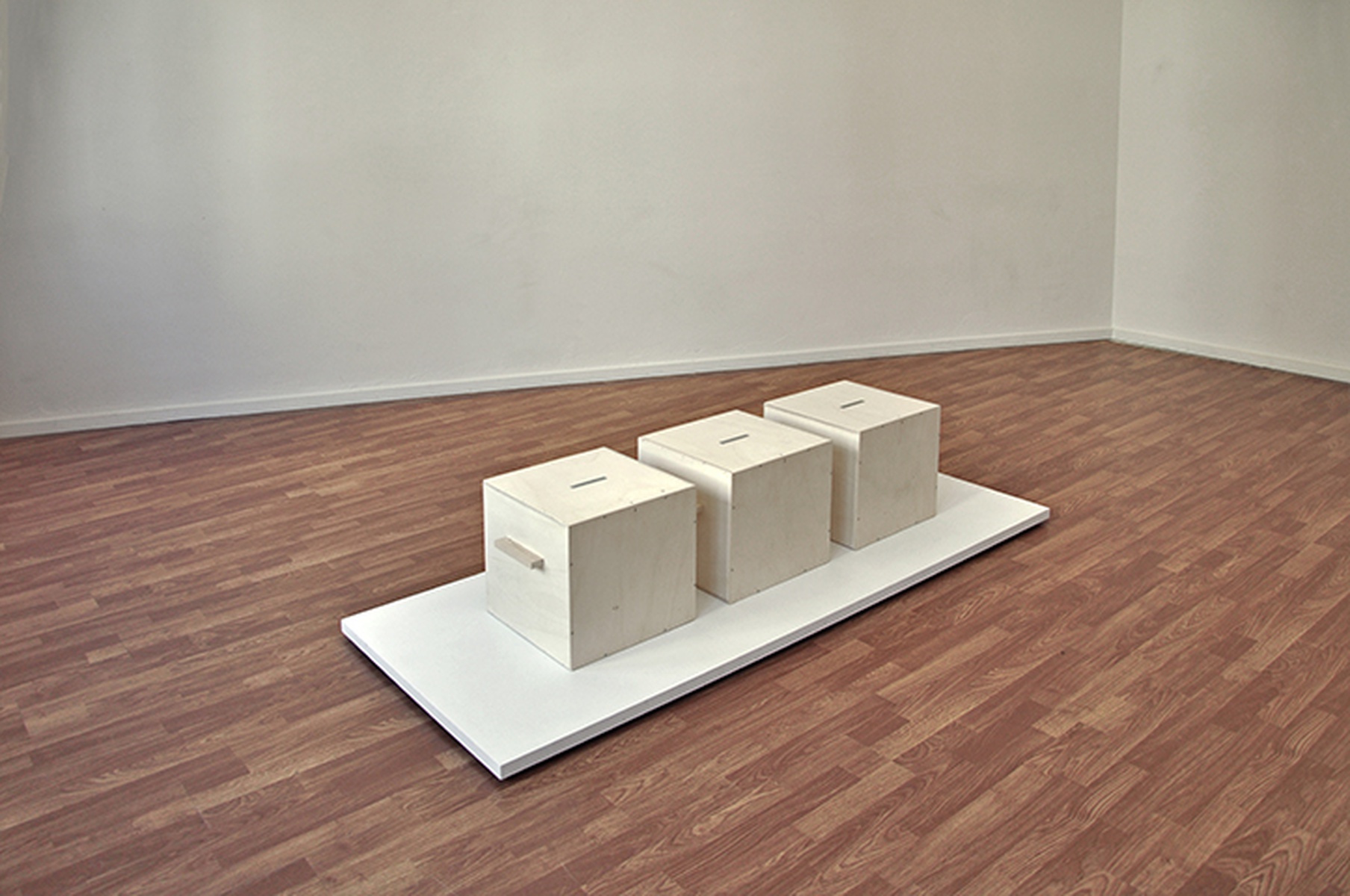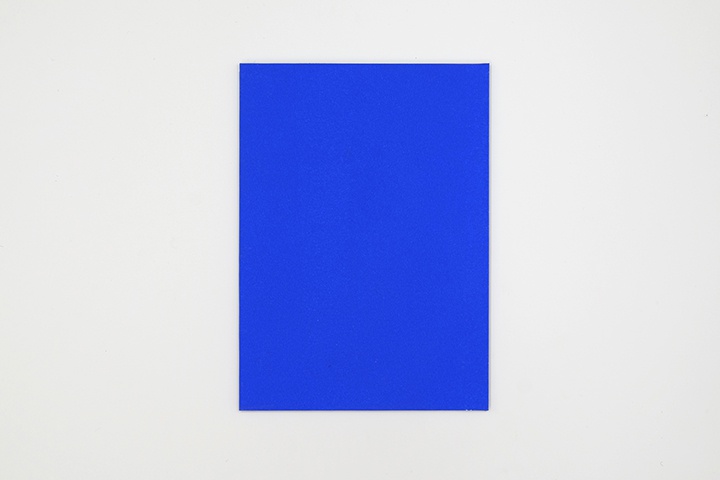É
Exhibition
20 Mar – 11 Apr 2015
Opening
Friday, 20 March 22:45
Free admission
In the spring of 1686, the poet Matsuo Bashô gathered in his cottage, in Fukagawa, a group of friends who were invited to compose poems about frogs. It is possible to imagine the entertainment of the guests under the breeze of a palm tree shadow planted near the entrance, in search for inspiration, certainly maximised by the sake and by the sight of stars. The meeting became known as the frog reunion (“Kawazuaze”) and from it emerged 41 poems compiled by Senka in a volume with the same name as the gathering.
A sneeze, water running between walls, an air current, a blaze or a flame are the raw materials for the art of Pedro Morais, that probably forms some of his ideas whilst sitting, giving attention to the world and its variants, in moments of slow breathing or in the whiskey sips, drunk into the night while smoking rolled up cigarettes.
Everything arrives at the right time, in the season change, which also demands the nurturing of the earth, even if dry. There is a need to remain, to attentively stay, in order to find the impermanence, the slow mutation of the hours, cut by shadows and illuminations. “Is”.
A haiku is a verse that fires suddenly in all directions. Occasionally demanding years to compose. And it has its rules, already broken in the XX century, amongst others, by Santoka Taneda. The haiku is also a solitary place. He bursts from the body between collisions of senses or contradictory feelings. And appears exact, dry, full of vitality, even when written near an end: “My shame in the world/ will be soon forgotten – excursion of spring” (Shokei, 1895)
There is a fundamentally necessary silence to that which one sees and hears. It is from here that all becomes clear and also mysterious, without the need of explanation. The rigor of drawing mirrors its conceptual accuracy: Pedro Morais, has said numerously, paints in four dimensions. And if masters have, something still to prove, they are called Dōgen Zenji, Eckhart de Hochheim, Muqi Facing, Jiddu Krishnamurti, Marcel Duchamp, Hogen Yamahata e Thich Nhat Hanh.
We sought to celebrate this equinox with Pedro Morais and extend it for numerous weeks, with its boxes, golden seeds (olive, persimmon, pine), lands painted of blue and phrases. It is this way and could not be otherwise. We also want to now, here, sit and breathe slowly. And above all to transmit a learning exercise: that of the rigor found in nature that everyday is re born and changes itself to become once again the same.
The frogs and cicadas were motives through which Bashô wanted to tell us from the profound silence related with the impermanence of existence, which in the case of some zen poets, translated itself in a vagabond and disobedient living. Ikkyu is another of these authors, someone who always expressed his nature, just like a plant, insect or animal does.
This is an exhibition that is close to nature and ourselves, without a distance separating us, from the artist, from the works now revealed and from the world. From here launch, like small seeds, three texts that look to extend, like concentric circles, the works produced by Pedro Morais for “É” [Is].
....
stillness ah!
rocks into seep
cicada ’s call
Matsuo Bashô (1694)
....
Look at the cherry blossoms!
Their colour and scent fall with them,
Are gone for ever,
Yet mindless
The spring comes again.
Ikkyu (1394-1481)
....
This trip –
An endless trip,
Tsu-ku-tsu-ku-boshi.
Taneda Santoka (1940)
....
From Pedro Morais' journey we can highlight his stay in Paris between 1965 and 1977, after which he returned to Lisbon, where he developed, from 1979 to 1994, at the school António Arroio, one of the most important artistic teaching experiences of the post-revolution period, the Atelier Livre AT.RE. Since the 1980s, he has been exhibiting his work mainly in institutions and independent spaces, such as Sociedade Nacional de Belas Artes, Museu Nacional de Arte Antiga, Boqueirão da Praia da Galé, Centro de Arte Moderna (Calouste Gulbenkian Foundation), Serralves Museum of Contemporary Art, Culturgest (Chiado 8) and Edifício Avenida.
Exhibition
20 Mar – 11 Apr 2015
Opening
Friday, 20 March 22:45
Free admission

